On View
At Miami Art Week, Thousands of Works Created by Human Artists—and a Few by Artificial Intelligence, Too
AICAN presents a booth full of work created by AI at Scope. But viewers still have a lot to learn.
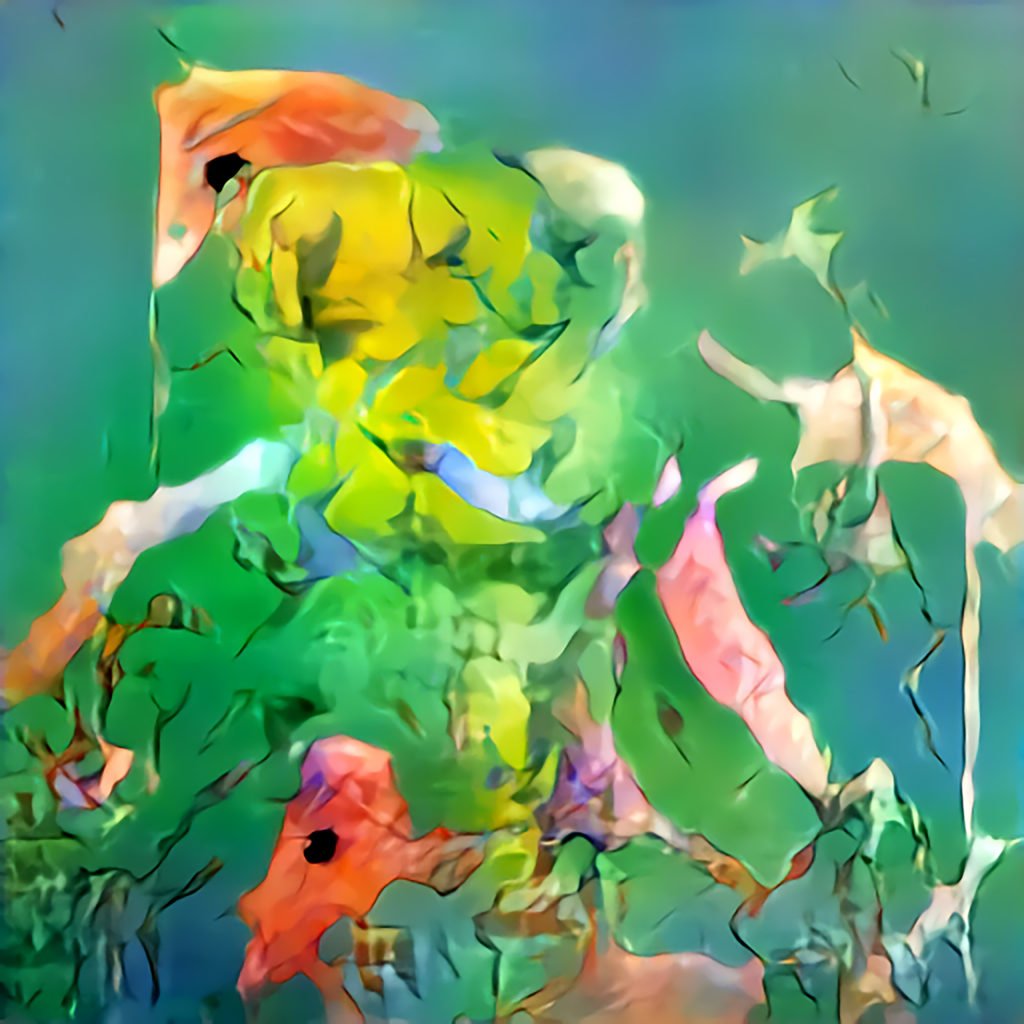
AICAN presents a booth full of work created by AI at Scope. But viewers still have a lot to learn.

Tim Schneider

If you ever needed an example of a subject that appeals to a niche audience, you could do a lot worse than selecting the synthesis between art and machine learning (commonly simplified into the phrase “artificial intelligence”).
While interest in the genre is certainly growing, particularly after this October’s screaming (and misleading) headlines about the alleged first-ever auction sale of a work created by AI at Christie’s, it’s safe to say the process and implications of this relationship remain light-years away from intuitive, even to committed art lovers. So it’s not quite the type of work that you would expect to see championed at Scope Miami Beach, one of the decidedly more populist fairs of this year’s Miami Art Week.
Which is exactly why it’s surprising to find the AICAN booth occupying pride of place inside Scope’s beachfront tent. Developed by Ahmed Elgammal, a computer science professor and founding director of the Art and Artificial Intelligence Lab at Rutgers University, AICAN is a software initiative that aims to elevate algorithmic art from imitation to autonomous creativity. The acronym stands for “Artificial Intelligence Creative Adversarial Network.” It’s a mouthful that would tip off machine-learning pros—and machine-learning pros only—that Elgammal and company are up to something slightly different than the likes of Obvious, the French trio that engineered the record-breaking Christie’s sale.
Unlike so-called Generative Adversarial Networks (often shorthanded as “GANs”), AICAN isn’t trained on a highly specific set of images—say, oil-painted Renaissance portraiture—and tasked with outputting a new image close enough to the inputs to fool a discriminator algorithm into recognizing the new image as manmade. Instead, Elgammal programmed AICAN to crawl an ever-increasing dataset of images from western art history, ranging from portraits to landscapes to abstractions (and beyond). The software has now absorbed over 100,000 training images primarily sourced from WikiArt and online museum collections. (It’s like art school, but for algorithms.)
Using this reference pool, the software must then contend with two opposing directives in its own coding: to create something stylistically innovative, but not too innovative. Think of it as the Goldilocks principle of software art. AICAN even generates its own titles based on data from the works in its training set.
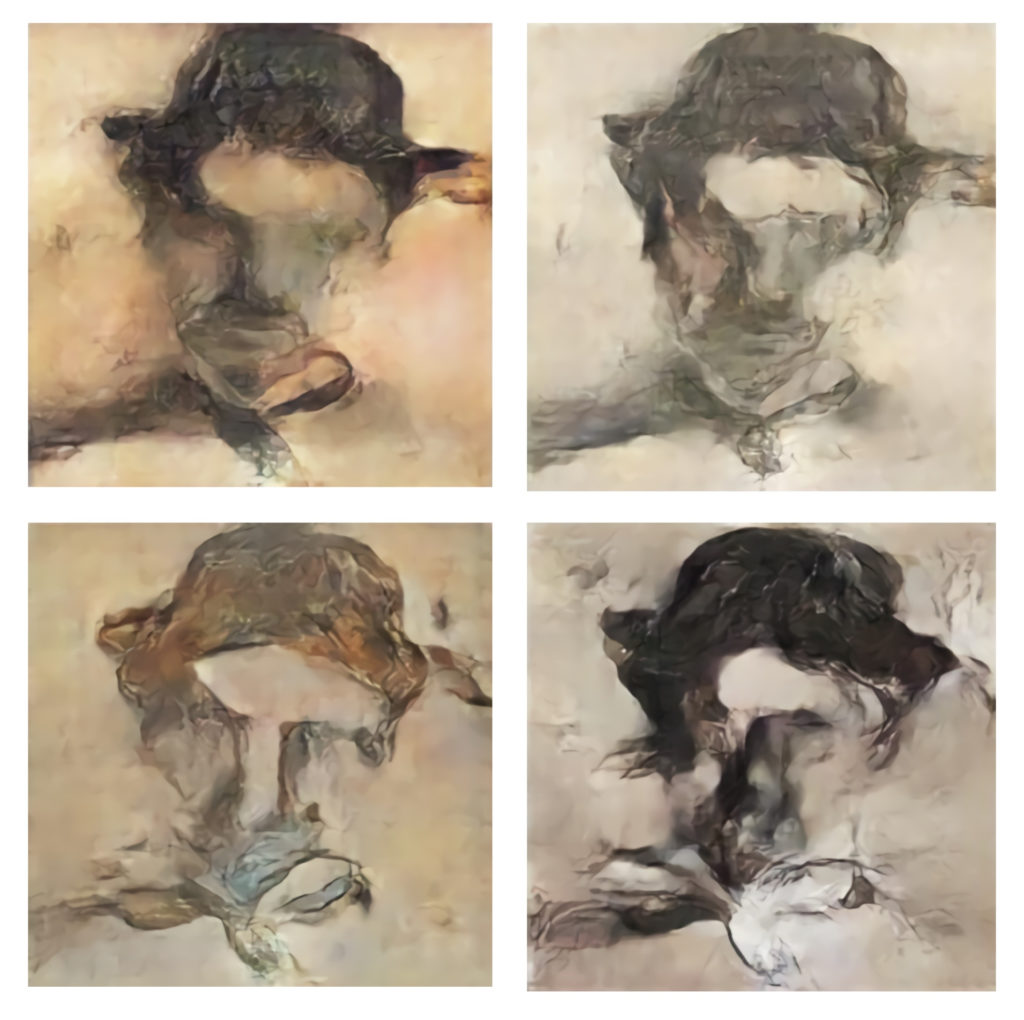
Devin Gharakhanian and AICAN, Carl Haplin, 2018. Image courtesy of AICAN.
In an interview with artnet News, Elgammal said that he instilled these principles into AICAN to try to replicate the workings of the unconscious human mind. The underlying contention is that true creativity comes from fresh concepts. “Art is about an idea, not execution,” he explained. Software unable to transcend this divide will only produce skilled mimicry at best and outright gimmickry at worst.
Elgammal believes AICAN will be able to forge new frontiers in both machine learning and the humans interacting with it. From the outset, he designed AICAN to be a true “creative partner” to flesh-and-blood artists—a force that can inspire new directions in their practices and new potential in the minds of viewers.
While the vast majority of the works on view at Scope were generated exclusively by the software, the special presentation also includes collaborations between AICAN and two artists: Tim Bengel and Devin Gharakhanian. In each case, Elgammal worked closely with the artists to devise custom methods for the software to complement or expand their usual processes. Although the results are printed onto aluminum just like many of the AICAN-only works, they are also instantly recognizable as different from the rest of the stand (as well as from one another).
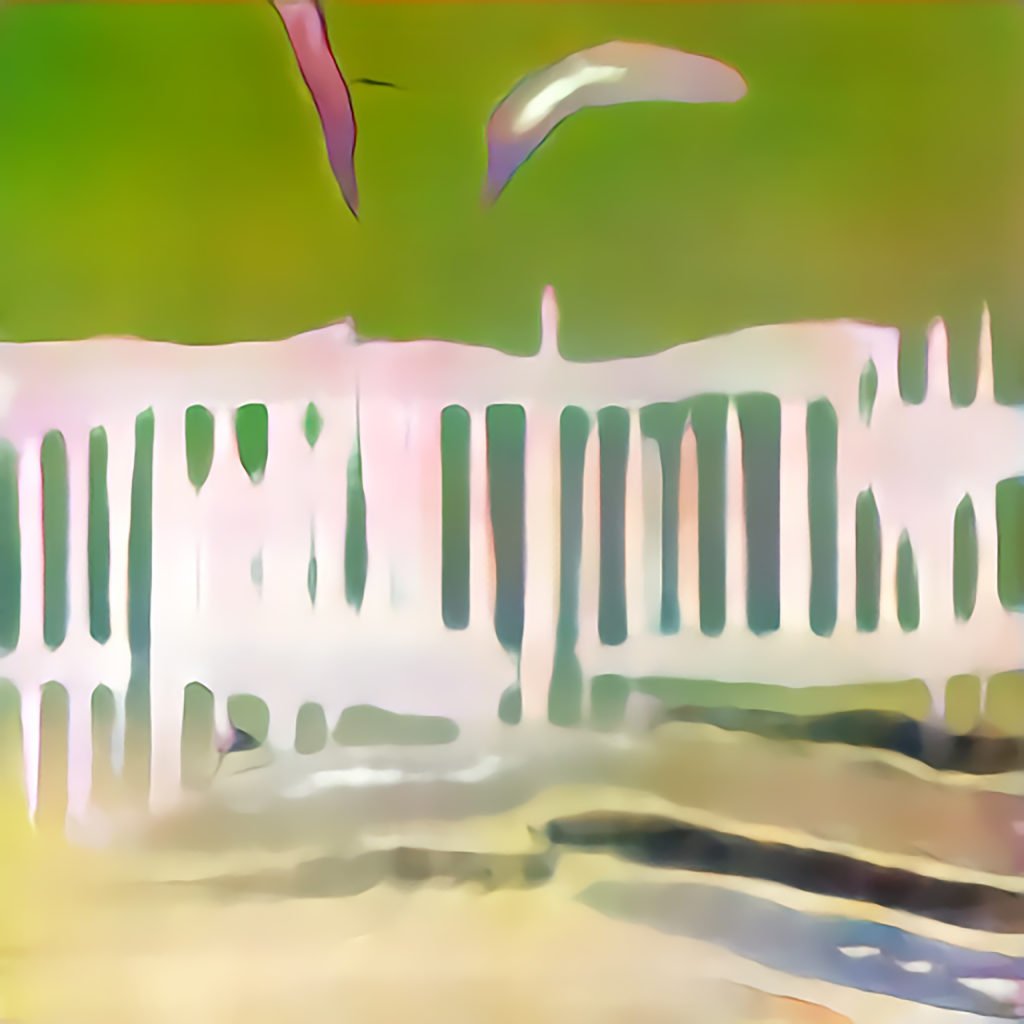
AICAN, Aurora Dunes, 2018. Image courtesy of AICAN.
Another deviation of sorts concerns Elgammal’s perspective on the fair’s purpose. Works were priced from $8,000 to $25,000 at press time; a handful of works were pre-sold and one more had been placed by Friday morning. (For comparison, another AICAN work sold for $16,000 at a recent benefit auction.) However, Elgammal and his dealer, Jessica Davidson of Davidson Art Advisory, have agreed to prioritize raising awareness over making sales this week. “It is more important that people see this as quality art,” said Elgammal. “We want this [genre] to become mainstream.”
The opening days of Scope seemed to advance the ball toward that goal. Both Elgammal and Davidson described visitors’ responses to the works as overwhelmingly enthusiastic. The most common assumption among first-time viewers was that the pieces had been created entirely by a human. But once they learned about the influence of the machine, their interest generally deepened rather than receding.
Still, this doesn’t mean that everyone perfectly understood the works’ origins or implications. According to Davidson, most people tend to focus on the production process, whereas she and Elgammal are keen to steer them toward the conceptual layer. But making that shift often involves educating curious visitors that AICAN’s works are generated by software, not hardware. “People tend to think it’s painted by a robot,” said Davidson.
Clearly, the community of artists and advocates engaged with machine-learning still have plenty of educating to do. And if you can’t make it to Scope to see AICAN for yourself, scroll down for more images of the works in the booth.
AICAN is on view at Scope Miami Beach through Sunday, December 9, 2018.

AICAN, Link Between Heaven and Earth, 2018. Image courtesy of AICAN.
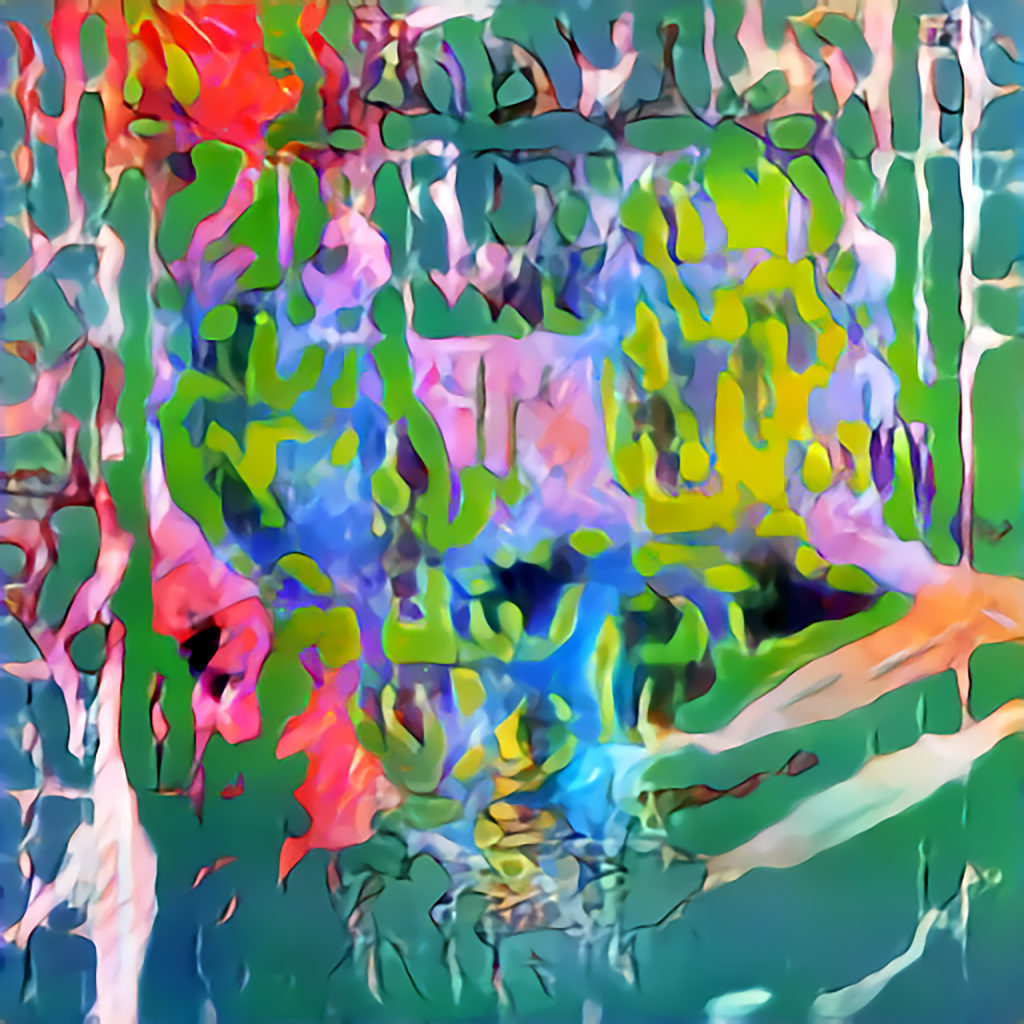
AICAN, Tropical Inception, 2018. Image courtesy of AICAN.
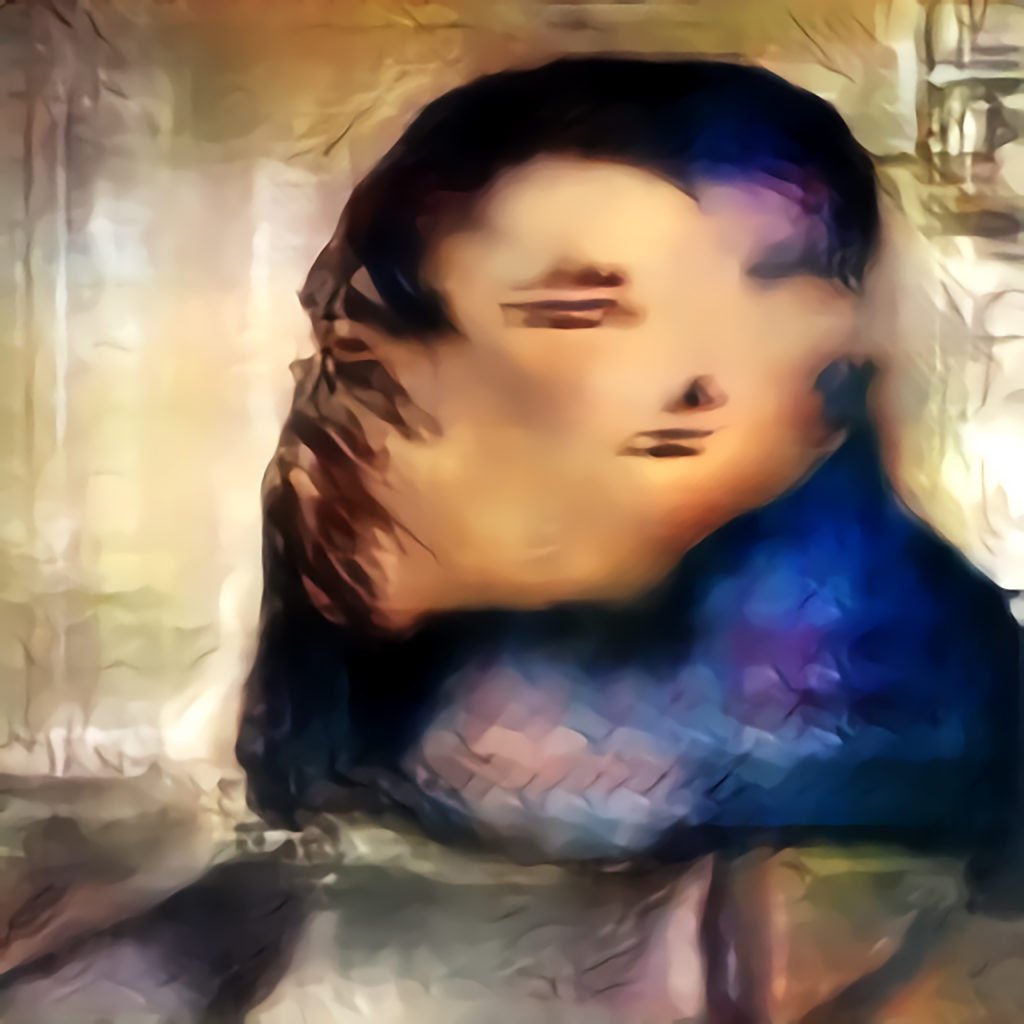
AICAN, Unsettled, 2018. Image courtesy of AICAN.
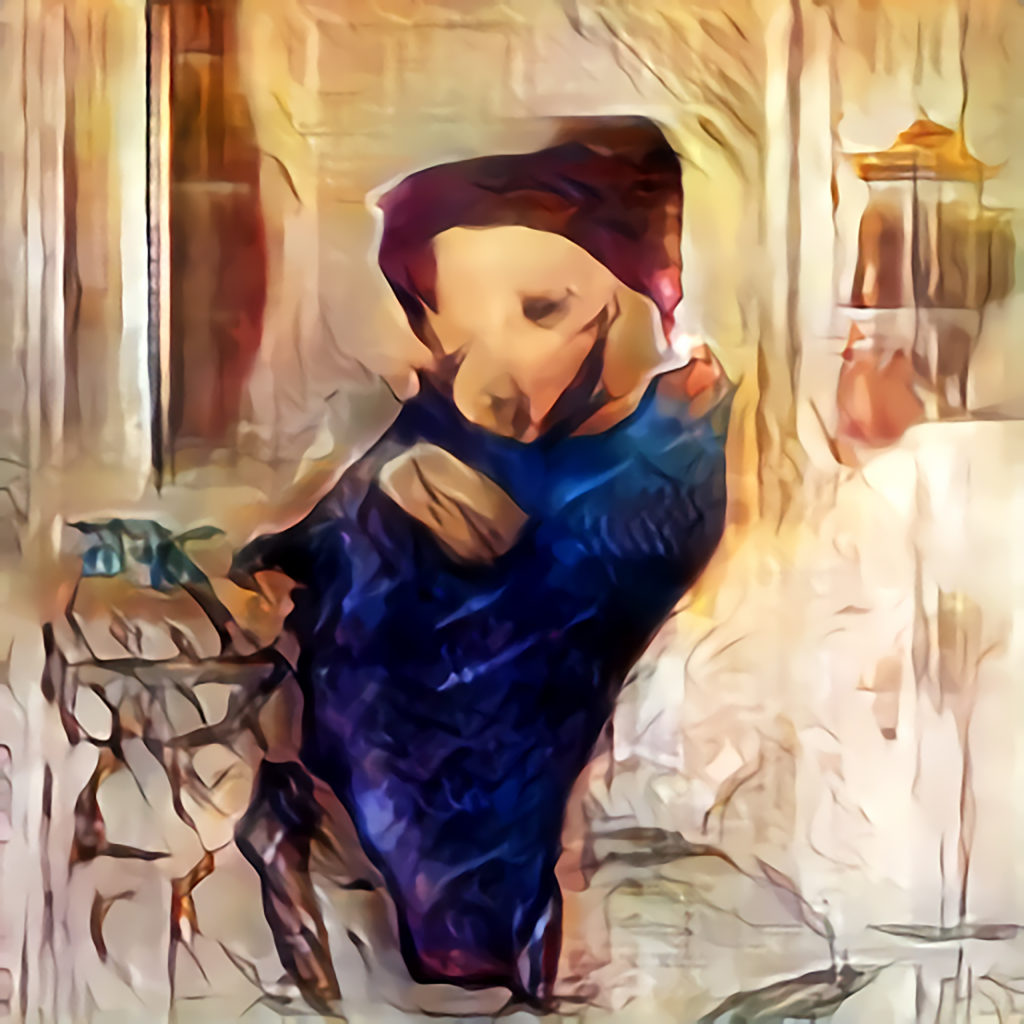
AICAN, Uncanny Girl in Kimono, 2018. Image courtesy of AICAN.
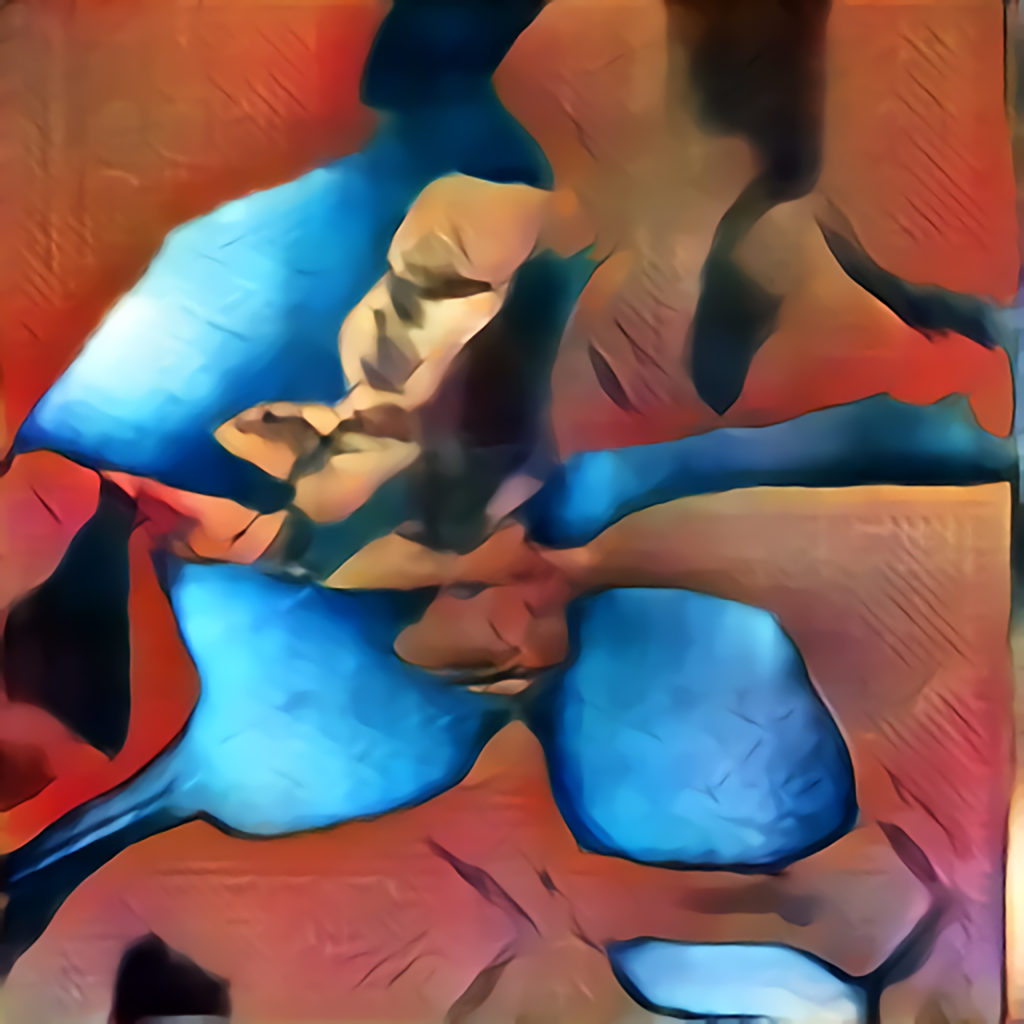
AICAN, Flora, 2018. Image courtesy of AICAN.